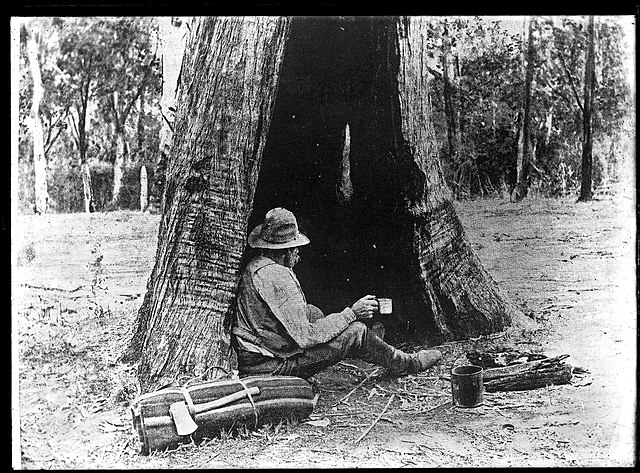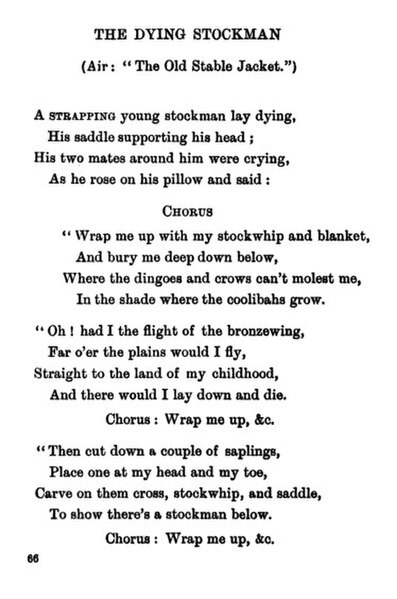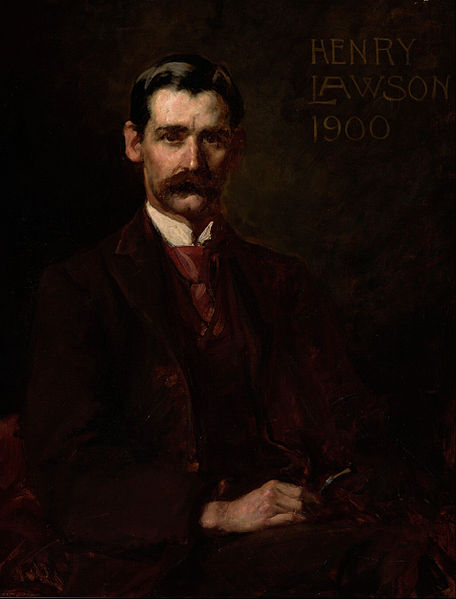A swagman was a transient labourer who travelled by foot from farm to farm carrying his belongings in a swag. The term originated in Australia in the 19th century and was later used in New Zealand.
Photograph of a swagman, c. 1901
Swagman, n.d.
Down on His Luck, painted by Frederick McCubbin in 1889, depicts a melancholic swagman "on the Wallaby"
"The Shiner", a South Island swagman from the 1870s to the 1920s
The bush ballad, bush song, or bush poem is a style of poetry and folk music that depicts the life, character and scenery of the Australian bush. The typical bush ballad employs a straightforward rhyme structure to narrate a story, often one of action and adventure, and uses language that is colourful, colloquial, and idiomatically Australian. Bush ballads range in tone from humorous to melancholic, and many explore themes of Australian folklore, including bushranging, droving, droughts, floods, life on the frontier, and relations between Indigenous and non-Indigenous Australians.
Cover of Old Bush Songs (1905), Banjo Paterson's seminal collection of bush ballads
First page of "The Dying Stockman," a bush ballad published in Banjo Paterson's 1905 collection The Old Bush Songs
Adam Gordon
Henry Lawson








